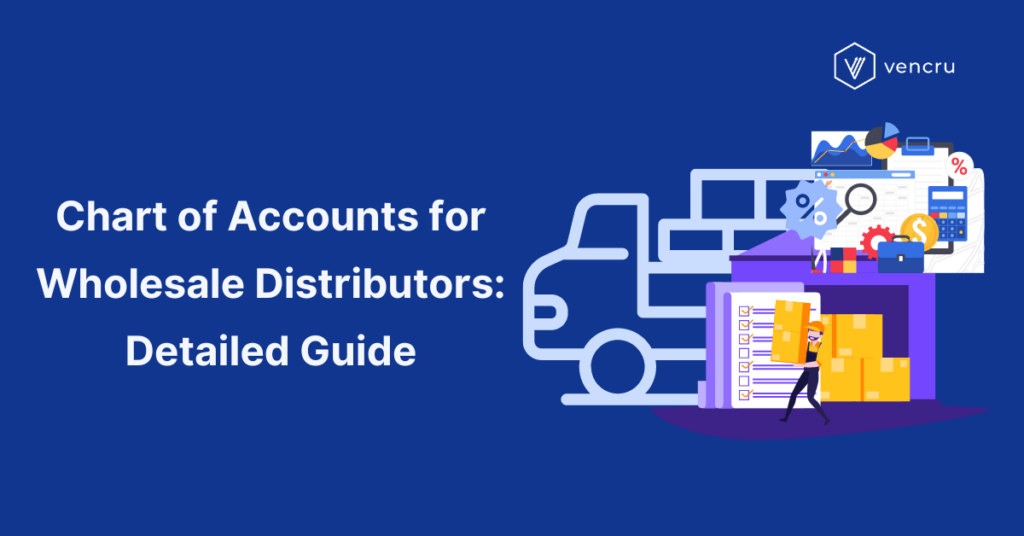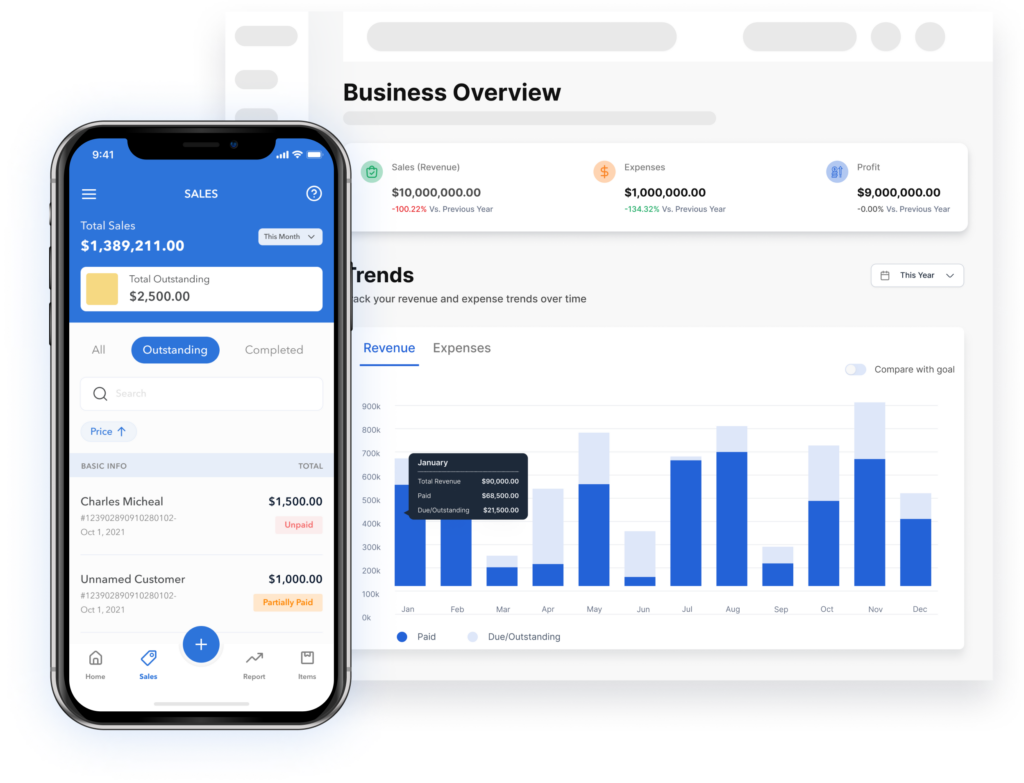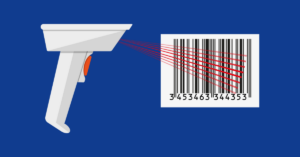Running a wholesale distribution business requires a keen eye for detail and a firm grasp of finances. A well-organized Chart of Accounts for Wholesale Distributors acts as the anchor, providing a structured framework for categorizing all financial transactions, allowing you to track every penny coming in (revenue) and going out (expenses). This blog post dives deep into the world of Wholesalers Chart of Accounts.

We’ll explore:
- What is a Chart of Accounts and why is it crucial for your wholesale business?
- The Key Components of a Wholesale Distributor Chart of Accounts
- Understanding Wholesalers Chart of Accounts with Journal Entries
- Streamlining Your Accounting with Vencru
What is a Chart of Accounts and why is it crucial for your wholesale business?

A Chart of Accounts for Wholesale Distributors is a list of financial accounts used to categorize and track all your wholesale distribution business’s financial transactions. Think of it as a filing system for your money, with each account representing a specific type of activity. By grouping transactions into these categories, you gain valuable insights into your business’s financial health and performance.
Here’s why a CoA is essential for wholesale distributors:
- Effortless Bookkeeping: Wholesalers Chart of Accounts eliminates the guesswork from bookkeeping. Transactions are categorized consistently, saving you valuable time and minimizing errors, especially if you manage a large volume of inventory or multiple suppliers.
- Accurate Financial Reporting: A well-defined Chart of Accounts for Wholesale Distributors allows you to generate precise financial reports like income statements and balance sheets. These reports provide a clear picture of your business’s financial health and profitability, crucial for informed decision-making and attracting investors.
- Data-Driven Decisions: Categorized data empowers you to make strategic choices. Analyze trends, identify areas for cost savings, optimize pricing for different customer segments, and track the overall profitability of your product lines.
- Simplified Tax Compliance: Come tax season, a Wholesalers Chart of Accounts simplifies the process. Having all your income and expenses neatly organized translates to faster and more accurate tax preparation, ensuring you comply with tax regulations.
- Improve Inventory Management: Specific inventory accounts within your CoA allow you to track inventory levels effectively, preventing stockouts and overstocking.
- Control Costs: By monitoring expense categories in your Wholesalers Chart of Accounts, you can identify areas where you can potentially reduce costs and improve your bottom line.
Related Read: Chart of Accounts: Definition, examples, and industry-specific versions
The Key Components of a Wholesale Distributor Chart of Accounts
A typical Chart of Accounts for Wholesale Distributors is categorized into five main groups:
- Assets: These represent what your business owns, including inventory (the lifeblood of your business), property, equipment used in your warehouse, and even cash on hand.
- Liabilities: These reflect your debts, such as money owed to suppliers for products purchased or outstanding loans.
- Equity: This category reflects your initial investment in the business and any accumulated profits (the difference between your revenue and expenses).
- Revenue: Here you track all your income streams, including sales revenue from wholesale transactions.
- Expenses: This is where you categorize all your business’s costs, such as:
- Cost of Goods Sold (COGS): The direct cost of acquiring the products you sell to your clients.
- Operating Expenses: Rent, utilities, employee salaries, marketing and advertising costs, and other expenses associated with running your business.
Essential Accounts for Your Wholesale Distributor CoA
Assets – Current Assets
| Account Number | Account Name | Description |
|---|---|---|
| 101 | Cash | Physical currency on hand |
| 102 | Checking Account | Funds available in your checking account |
| 103 | Savings Account | Funds saved in an interest-bearing savings account |
| 104 | Petty Cash | A small amount of cash kept on hand for minor expenses |
| 105 | Accounts Receivable | Outstanding payments from customers |
| 106 | Inventory | Physical stock of products available for sale in your store |
| 107 | Prepaid Expenses | Payments made in advance for services or goods not yet received |
Assets – Non-Current Assets
| Account Number | Account Name | Description |
|---|---|---|
| 201 | Long-Term Investments | Investments held for more than one year |
| 202 | Property | Owned land or buildings used for your wholesale business |
| 203 | Plant & Equipment | Machinery, fixtures, and equipment used in your warehouse |
| 204 | Vehicles | Any vehicles used for business purposes |
| 205 | Accumulated Depreciation | A contra-asset account that represents the accumulated depreciation of your assets |
Liabilities – Current Liabilities
| Account Number | Account Name | Description |
|---|---|---|
| 301 | Accounts Payable (Suppliers) | Amounts owed to suppliers for goods or services received |
| 302 | Short-Term Loans | Loans payable within one year |
| 303 | Accrued Expenses | Expenses incurred but not yet paid, e.g., utilities or rent |
Liabilities – Non-Current Liabilities
| Account Number | Account Name | Description |
|---|---|---|
| 401 | Long-Term Loans | Loans with a repayment period exceeding one year |
| 402 | Mortgage Payable | Outstanding mortgage on your warehouse property |
Equity
| Account Number | Account Name | Description |
|---|---|---|
| 501 | Owner’s Equity | The owner’s initial investment in the business |
| 502 | Retained Earnings | Accumulated profits or losses retained in the business |
Revenue
| Account Number | Account Name | Description |
|---|---|---|
| 601 | In-Store Sales | Revenue generated from sales made within your wholesale store |
| 602 | Online Sales | Revenue generated from sales made through your online platform |
| 603 | Wholesale Sales | Revenue from bulk sales to other businesses or resellers |
| 604 | Sales Returns and Allowances | The value of returned products or customer discounts |
Expenses – Cost of Goods Sold (COGS)
| Account Number | Account Name | Description |
|---|---|---|
| 701 | Cost of Goods Sold (COGS) | Costs directly associated with acquiring or producing products sold in your warehouse and your online store |
| 702 | Freight and Shipping | Costs related to transporting goods to your wholesale location |
Expenses – Operating Expenses
| Account Number | Account Name | Description |
|---|---|---|
| 801 | Rent | Lease payments for your warehouse |
| 802 | Utilities | Expenses for electricity, water, and gas |
| 803 | Wages and Salaries | Employee compensation, including salaries and wages |
| 804 | Marketing and Advertising | Costs related to promotional activities |
| 805 | Insurance | Payments for business insurance policies |
| 806 | Repairs and Maintenance | Expenses for upkeep and repair of your warehouse and equipment |
| 807 | Depreciation Expenses | Allocation of asset costs over their useful life |
| 808 | Office Supplies | Costs associated with office materials |
| 809 | Miscellaneous Expenses | Other operating expenses not covered above |
Understanding Wholesalers Chart of Accounts with Journal Entries

A wholesaler chart of accounts (CoA) categorizes financial transactions specific to wholesale businesses. It ensures proper recording, tracking, and reporting of all financial activities. Here, we’ll explain the CoA through three common journal entry scenarios:
1. Purchasing Inventory:
Imagine you, a wholesale distributor, purchase $10,000 worth of electronics from a supplier on credit (payment terms are net 30, meaning payment is due in 30 days).
Journal Entry:
| Account | Debit | Credit | Description |
|---|---|---|---|
| Inventory | $10,000 | To record the purchase of electronics on credit | |
| Accounts Payable (Suppliers) | $10,000 | To record the liability for the purchase |
Explanation:
- We debit “Inventory” by $10,000 because the value of the electronics has increased our inventory assets.
- We credit “Accounts Payable (Suppliers)” by $10,000 because we now owe this amount to the supplier.
2. Selling Inventory:
Let’s say you sell $8,000 worth of electronics to a reseller for cash. The cost of these electronics (based on your records) is $5,000.
Journal Entry:
| Account | Debit | Credit | Description |
|---|---|---|---|
| Cash | $8,000 | To record the cash received from the sale | |
| Wholesale Sales | $8,000 | To record the revenue generated from the sale | |
| Cost of Goods Sold (COGS) | $5,000 | To record the cost of the electronics sold | |
| Inventory | $5,000 | To decrease the inventory value of the electronics sold |
Explanation:
- We debit “Cash” by $8,000 because we received cash for the sale.
- We credit “Wholesale Sales” by $8,000 to record the income generated.
- We debit the “Cost of Goods Sold (COGS)” by $5,000 to reflect the cost of the electronics sold.
- We credit “Inventory” by $5,000 to reduce the inventory value by the cost of the sold electronics.
3. Paying a Supplier:
After 30 days, you pay the $10,000 owed to your supplier from scenario 1.
Journal Entry:
| Account | Debit | Credit | Description |
|---|---|---|---|
| Accounts Payable | $10,000 | To record the payment made to the supplier | |
| Cash | $10,000 | To record the cash used for the payment |
Explanation:
- We debit “Accounts Payable” by $10,000 because we are settling the outstanding liability.
- We credit “Cash” by $10,000 to reflect the cash used for the payment.
Streamlining Your Accounting with Vencru
With Vencru’s user-friendly interface and advanced features, managing your wholesale distribution business’s chart of accounts has never been easier. Streamline your financial management processes and gain valuable insights into your business’s performance.
Why Consider Software Like Vencru for wholesale accounting?
- Streamlined Inventory Management: Gain real-time insights into your inventory levels, automate purchase orders, and avoid stockouts.
- Effortless Invoicing: Create professional invoices, manage customer accounts receivable, and accept online payments efficiently.
- Cost of Goods Sold (COGS) Tracking: Ensure accurate COGS calculations for optimal profitability analysis.
- Data-Driven Decision Making: Gain valuable insights from reports and analytics to make informed business decisions.
- Simplified Tax Preparation: Streamline your tax filing process with organized financial data.
Related Content:
- Accounting Software for wholesale businesses
- Guide to Retail Chart of Accounts (with sample PDF)
- Chart Of Accounts For A Construction Company: Detailed Guide
- Chart of Accounts for Nonprofit: A Comprehensive Guide
- Chart Of Accounts For E-commerce Businesses: Detailed Guide
Disclaimer: This article is for informational purposes only and does not constitute financial or legal advice. Organizations should consult qualified professionals for guidance on their specific financial management needs.









